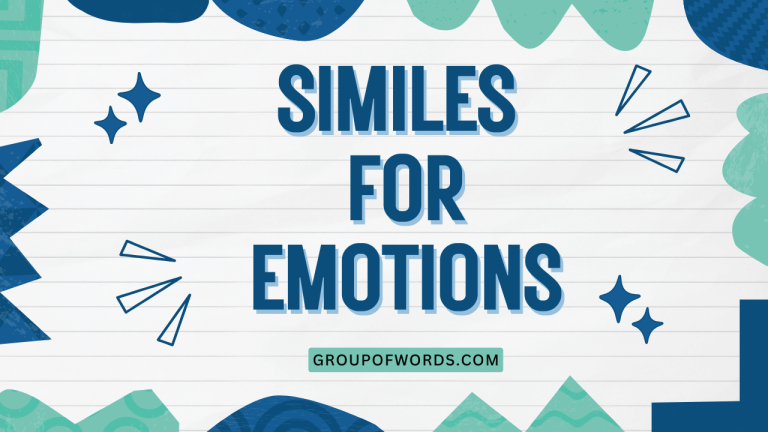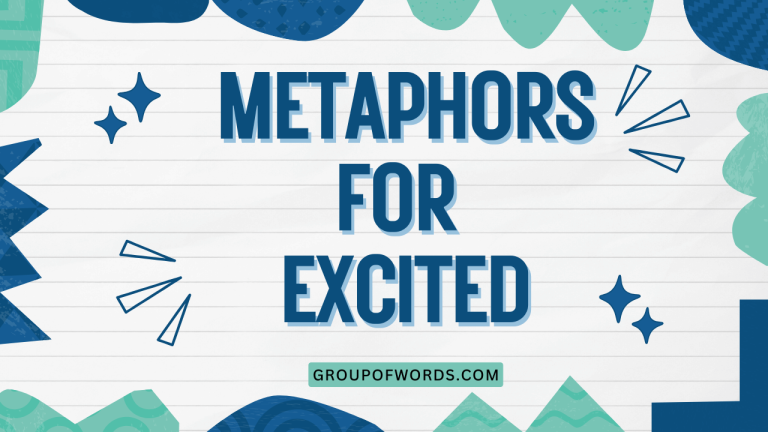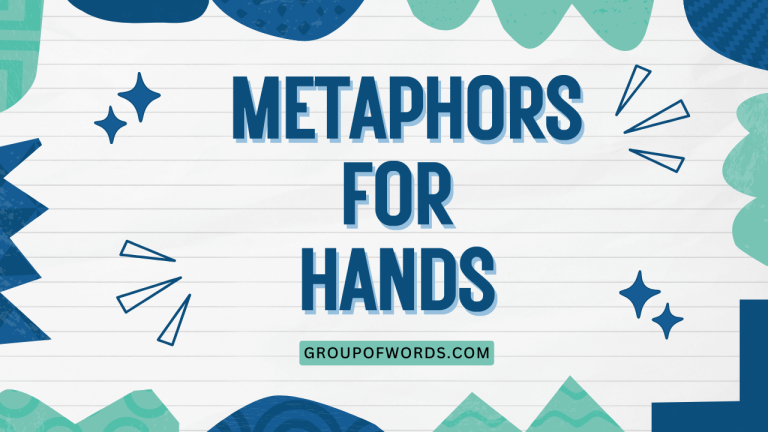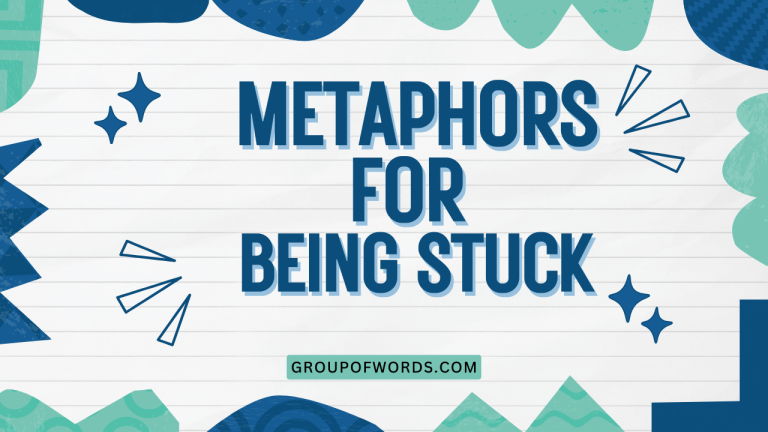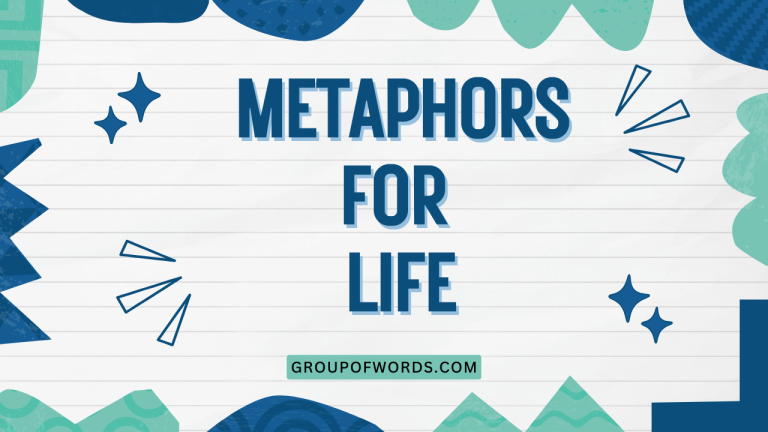Metaphors for Children: Understanding and Using Figurative Language
Metaphors are a powerful tool in language, allowing us to describe something by comparing it to something else. For children, understanding metaphors can unlock a deeper appreciation of language, enhance their creative writing skills, and improve their comprehension of complex ideas.
This article will explore the world of metaphors, providing clear definitions, examples, and exercises to help children and educators alike master this essential literary device. Whether you’re a student, a teacher, or a parent, this guide will equip you with the knowledge and resources necessary to effectively teach and understand metaphors.
This article is designed for children learning about figurative language, educators teaching language arts, and parents who want to support their children’s language development. By understanding metaphors, children can become more expressive writers, critical readers, and creative thinkers.
Table of Contents
- Definition of Metaphor
- Structural Breakdown of a Metaphor
- Types of Metaphors
- Examples of Metaphors
- Usage Rules for Metaphors
- Common Mistakes with Metaphors
- Practice Exercises
- Advanced Topics in Metaphors
- Frequently Asked Questions (FAQ)
- Conclusion
Definition of Metaphor
A metaphor is a figure of speech that directly compares two unrelated things without using “like” or “as.” It states that one thing is another, implying a similarity between them. Metaphors help us understand abstract concepts by relating them to more concrete or familiar things. They add color, depth, and creativity to our language, making it more engaging and expressive. Think of it as a secret comparison – you’re not saying something is like something else; you’re saying it is that thing, but in a figurative, not literal, way.
The primary function of a metaphor is to create a vivid image or evoke a particular feeling in the reader or listener’s mind. By drawing a comparison between two seemingly different things, metaphors can reveal hidden connections and offer new perspectives. They are commonly used in literature, poetry, speeches, and everyday conversation to make language more interesting and memorable.
Context is crucial when interpreting metaphors. The meaning of a metaphor can change depending on the situation and the intended audience. Understanding the context helps us to grasp the underlying comparison and appreciate the intended effect. For example, “time is money” might mean something different in a business setting compared to a leisurely vacation.
Structural Breakdown of a Metaphor
A metaphor generally involves two key elements: the tenor and the vehicle. The tenor is the subject being described, and the vehicle is the object or concept to which the tenor is being compared. Understanding these components can help in both creating and interpreting metaphors.
For example, in the metaphor “The world is a stage,” the tenor is “the world,” and the vehicle is “a stage.” The metaphor suggests that life (the world) is like a play, with people acting out different roles. The connection between the tenor and vehicle is the implied similarity – in this case, the idea of roles, performances, and a structured narrative.
The ground of a metaphor refers to the shared characteristics or qualities between the tenor and the vehicle. It’s the basis on which the comparison is made. In the example above, the ground might include concepts like drama, actors, scripts, and audiences. Identifying the ground helps to clarify the meaning and impact of the metaphor. The more clearly you understand the ground, the better you understand the metaphor.
Here’s a breakdown of the structural elements:
- Tenor: The subject being described.
- Vehicle: The object or concept used for comparison.
- Ground: The shared characteristics between the tenor and vehicle.
Types of Metaphors
Metaphors come in various forms, each with its unique characteristics and effects. Understanding these different types can help you appreciate the versatility of this literary device and use it more effectively in your own writing and speaking.
Standard Metaphors
Standard metaphors are common and easily recognizable comparisons that are frequently used in everyday language. These metaphors are often simple and direct, making them easy to understand and apply. They help to convey ideas clearly and concisely.
For example, “He is a lion in battle” is a standard metaphor. It directly compares someone to a lion, highlighting their bravery and strength.
The comparison is straightforward and immediately understandable.
Extended Metaphors
An extended metaphor is a metaphor that is developed over several lines or even throughout an entire piece of writing. It involves drawing multiple parallels between the tenor and the vehicle, creating a more complex and detailed comparison. Extended metaphors add depth and richness to the text.
Consider this example: “Life is a journey. The road is long and winding, filled with obstacles and opportunities.
We must pack our bags carefully, choose our companions wisely, and stay focused on our destination.” Here, the initial metaphor of life being a journey is extended by exploring various aspects of a journey, such as the road, obstacles, and companions.
Mixed Metaphors
A mixed metaphor combines two or more incompatible metaphors into a single expression, often resulting in a humorous or nonsensical effect. Mixed metaphors can confuse the reader or listener and undermine the clarity of the message.
For instance, “Let’s nip it in the bud before it snowballs out of the park” is a mixed metaphor. It combines the idea of “nipping something in the bud” (stopping it early) with the image of “snowballing out of control” and “hitting a home run,” which don’t logically fit together.
While sometimes used for comedic effect, mixed metaphors should generally be avoided in formal writing.
Dead Metaphors
A dead metaphor is a metaphor that has become so overused that it has lost its figurative meaning and is now perceived as a literal expression. These metaphors were once creative and imaginative, but through constant repetition, they have become clichés.
Examples of dead metaphors include “the heart of the matter,” “falling in love,” and “legs of a table.” These expressions are so common that we rarely think of them as metaphors anymore. They are accepted as standard vocabulary.
Examples of Metaphors
Metaphors are everywhere! They’re in our favorite books, songs, and even in everyday conversations.
Here are some examples of metaphors categorized by common themes to help you understand how they’re used.
Metaphors in Nature
Nature provides a rich source of inspiration for metaphors. By comparing natural elements to human experiences, we can create vivid and evocative images.
The following table provides examples of metaphors related to nature:
| Metaphor | Explanation |
|---|---|
| The sun is a golden coin. | The sun’s bright, round shape is compared to a valuable coin. |
| The moon is a silver sickle. | The crescent moon’s curved shape is likened to a tool used for cutting. |
| The stars are diamonds in the sky. | The stars’ sparkling appearance is compared to precious gems. |
| The river is a liquid road. | The river’s flowing movement is compared to a path for transportation. |
| The forest is a green cathedral. | The tall trees and dense foliage create a sense of awe and reverence, like a cathedral. |
| Rain is nature’s tears. | Rain is poetically described as the weeping of nature, evoking sadness or cleansing. |
| The wind is a playful spirit. | The wind’s unpredictable and lively movement is compared to a mischievous spirit. |
| The mountain is a sleeping giant. | The mountain’s large, imposing presence is compared to a giant at rest. |
| The ocean is a restless heart. | The ocean’s constant movement and vastness are likened to the human heart. |
| The clouds are cotton balls in the sky. | The clouds’ fluffy, white appearance is compared to soft cotton balls. |
| The desert is a sandy oven. | The desert’s extreme heat is compared to a hot oven. |
| The flowers are nature’s smiles. | The flowers’ bright colors and beauty are compared to a cheerful expression. |
| The snow is a white blanket. | The snow’s covering of the ground is compared to a warm blanket. |
| The leaves are dancers in the wind. | The leaves’ swaying movement is compared to graceful dancers. |
| The volcano is a fiery beast. | The volcano’s explosive power is compared to a dangerous creature. |
| The lake is a mirror to the sky. | The lake’s reflective surface is compared to a mirror. |
| The rainbow is a colorful bridge. | The rainbow’s arching shape is compared to a bridge. |
| The thunder is the sky’s roar. | The thunder’s loud sound is compared to a powerful roar. |
| The sunrise is hope’s awakening. | The sunrise symbolizes the beginning of a new day and the promise of hope. |
| The sunset is the day’s farewell. | The sunset marks the end of the day and is seen as a gentle goodbye. |
| The grass is a green carpet. | The grass is described as a soft ground covering. |
| The stars are celestial candles. | The stars light up the night like candles. |
| The forest is a symphony of green. | The various shades of green in the forest create a harmonious visual experience. |
Metaphors in Emotions
Emotions are often abstract and difficult to describe. Metaphors can help us express our feelings by comparing them to more tangible experiences.
The following table provides examples of metaphors related to emotions:
| Metaphor | Explanation |
|---|---|
| Happiness is sunshine. | Happiness is compared to the warmth and brightness of the sun. |
| Sadness is a heavy cloak. | Sadness is likened to a burdensome garment that weighs you down. |
| Anger is a raging fire. | Anger is compared to a destructive and uncontrollable fire. |
| Fear is a cold shadow. | Fear is likened to a chilling presence that follows you. |
| Love is a warm blanket. | Love is compared to a comforting and protective covering. |
| Jealousy is a green-eyed monster. | Jealousy is personified as a monstrous creature that consumes you. |
| Hope is a fragile seed. | Hope is described as something small and delicate that needs nurturing. |
| Despair is a bottomless pit. | Despair is compared to a deep, inescapable void. |
| Courage is a lion’s heart. | Courage is likened to the bravery and strength of a lion. |
| Grief is a silent scream. | Grief is described as an intense, unspoken pain. |
| Anxiety is a tangled knot. | Anxiety is compared to a complex and confusing problem. |
| Excitement is a bubbling spring. | Excitement is likened to a source of overflowing energy and enthusiasm. |
| Loneliness is an empty room. | Loneliness is compared to a desolate and unoccupied space. |
| Peace is a gentle breeze. | Peace is likened to a soothing and calming wind. |
| Frustration is a brick wall. | Frustration is compared to an obstacle that prevents progress. |
| Confusion is a foggy road. | Confusion is likened to a lack of clarity and direction. |
| Contentment is a cozy fire. | Contentment is compared to a source of warmth and comfort. |
| Disappointment is a deflated balloon. | Disappointment is described as a loss of joy and excitement. |
| Empathy is a bridge to others. | Empathy connects you to the feelings of other people. |
| Worry is a rocking chair. | Worrying gives you something to do but doesn’t get you anywhere. |
| Trust is a sturdy foundation. | Trust is something that is built over time and supports relationships. |
| Resentment is a bitter pill. | Resentment is unpleasant and hard to swallow. |
| Regret is a haunting melody. | Regret lingers in your mind, much like a catchy tune. |
Metaphors in Everyday Life
Metaphors are not just for literature; they are also used in everyday conversations to make our language more expressive and engaging.
The following table provides examples of metaphors used in everyday life:
| Metaphor | Explanation |
|---|---|
| Time is money. | Time is valuable and should be used wisely. |
| Life is a rollercoaster. | Life has its ups and downs, like a thrilling ride. |
| He is a night owl. | He prefers to be active and awake during the night. |
| She is an early bird. | She prefers to wake up and be active early in the morning. |
| The world is a stage. | Life is like a play, and people are actors performing their roles. |
| Ideas are seeds. | Ideas can grow and develop, like plants from seeds. |
| Arguments are wars. | Arguments are conflicts with winners and losers. |
| Knowledge is a treasure. | Knowledge is valuable and worth acquiring. |
| He is a rock. | He is strong, stable, and reliable. |
| She is a shining star. | She is talented, successful, and admired. |
| The city is a concrete jungle. | The city is a crowded and competitive environment. |
| My heart is an open book. | I am honest and transparent about my feelings. |
| He is a couch potato. | He is lazy and spends a lot of time sitting on the couch. |
| She is a social butterfly. | She is outgoing and enjoys socializing with others. |
| The internet is an information highway. | The internet provides access to a vast amount of information. |
| School is a building block. | School is a fundamental component of education. |
| Dreams are castles in the sky. | Dreams are ambitious and often unattainable goals. |
| He is a walking encyclopedia. | He is extremely knowledgeable about a wide range of subjects. |
| She is a ray of sunshine. | She is cheerful and brings joy to others. |
| The project is a piece of cake. | The project is easy and simple to complete. |
| He is a diamond in the rough. | He has great potential, but it needs to be developed. |
| She is a breath of fresh air. | She is invigorating and brings a new perspective. |
| The job is a rat race. | The job is a competitive and stressful environment. |
Usage Rules for Metaphors
Using metaphors effectively involves understanding certain rules and guidelines. While metaphors are creative and expressive, it’s important to use them appropriately to avoid confusion or misinterpretation.
- Clarity: Ensure that the metaphor is clear and understandable to your audience. The comparison should be logical and easy to grasp.
- Originality: Try to avoid clichés and overused metaphors. Strive for fresh and original comparisons that will capture the reader’s attention.
- Consistency: Maintain consistency within the metaphor. Avoid mixing incompatible images or ideas that can create confusion.
- Relevance: Make sure the metaphor is relevant to the context and the message you are trying to convey. The comparison should enhance the meaning, not distract from it.
- Appropriateness: Consider the audience and the purpose of your writing or speaking. Choose metaphors that are appropriate for the occasion and the intended effect.
Exceptions: Sometimes, breaking the rules can be intentional and effective. For example, mixed metaphors can be used for comedic effect or to create a sense of absurdity. However, these exceptions should be used sparingly and with careful consideration.
Common Mistakes with Metaphors
Even experienced writers can make mistakes when using metaphors. Being aware of these common errors can help you avoid them and improve the clarity and effectiveness of your writing.
Here are some common mistakes and how to correct them:
| Incorrect | Correct | Explanation |
|---|---|---|
| The project is a rollercoaster, but we need to nip it in the bud. | The project is a rollercoaster. | Avoid mixing incompatible metaphors. Stick to one consistent image. |
| He is a rock and a ray of sunshine. | He is a rock. / He is a ray of sunshine. | Choose one metaphor that best describes the person, or use them separately. |
| Time is money, and we should save it in the bank. | Time is money, so we should use it wisely. | Avoid taking a metaphor too literally. Focus on the intended comparison. |
| She is a shining star, but she’s also a diamond in the rough. | She is a shining star. / She is a diamond in the rough. | Choose the metaphor that best describes her current state, or use them in different contexts. |
| The internet is an information highway, and it’s also a piece of cake. | The internet is an information highway. | Avoid using unrelated metaphors in the same context. |
| Life is a rollercoaster, let’s grab the bull by the horns. | Life is a rollercoaster, let’s enjoy the ride. | Maintain a consistent theme within the metaphor. |
| He’s swimming in a sea of alligators. | He’s swimming in a sea of troubles. | Ensure the comparison is logical and understandable. Alligators do not represent anything. |
| Her smile was brighter than the sun. | Her smile was the sun. | The original is a simile, make sure the metaphor is direct. |
Practice Exercises
Test your understanding of metaphors with these practice exercises. Identify the metaphors in each sentence and explain their meaning.
Exercise 1: Identifying Metaphors
| Question | Answer |
|---|---|
| 1. The classroom was a zoo. | The classroom was chaotic and unruly, like a zoo. |
| 2. Her voice was music to his ears. | Her voice was pleasant and soothing, like music. |
| 3. The test was a walk in the park. | The test was easy and effortless, like a leisurely walk. |
| 4. He is a tower of strength. | He is strong, reliable, and supportive, like a tower. |
| 5. The news was a bolt from the blue. | The news was sudden and unexpected, like a lightning strike. |
| 6. Her eyes were sparkling jewels. | Her eyes were bright and beautiful, like jewels. |
| 7. The computer is a window to the world. | The computer provides access to information from all over the world. |
| 8. The politician is a snake in the grass. | The politician is deceitful and untrustworthy, like a hidden snake. |
| 9. The lawyer was a shark in the courtroom. | The lawyer was aggressive and merciless, like a shark. |
| 10. The assignment was a mountain to climb. | The assignment was challenging and difficult to complete, like climbing a mountain. |
Exercise 2: Creating Metaphors
Complete the following sentences by adding a metaphor:
| Question | Answer |
|---|---|
| 1. The baby’s skin was ____. | The baby’s skin was silk. |
| 2. The old house was ____. | The old house was a memory box. |
| 3. The athlete’s determination was ____. | The athlete’s determination was a blazing fire. |
| 4. The artist’s creativity was ____. | The artist’s creativity was a boundless ocean. |
| 5. The teacher’s guidance was ____. | The teacher’s guidance was a guiding star. |
| 6. The city at night was ____. | The city at night was a glittering jewel. |
| 7. The child’s laughter was ____. | The child’s laughter was a melody. |
| 8. The detective’s mind was ____. | The detective’s mind was a steel trap. |
| 9. The garden was ____. | The garden was a painter’s canvas. |
| 10. The storm was ____. | The storm was nature’s fury. |
Exercise 3: Identifying the Type of Metaphor
Identify whether the following metaphors are standard, extended, mixed, or dead:
| Question | Answer |
|---|---|
| 1. He is a shining star. | Standard |
| 2. Life is a journey, a winding road filled with challenges and triumphs. | Extended |
| 3. Let’s grab the bull by the horns and nip it in the bud. | Mixed |
| 4. The heart of the matter. | Dead |
| 5. The project is a marathon, each step a challenge, each mile a victory. | Extended |
| 6. She is a social butterfly. | Standard |
| 7. He is climbing the ladder of success but needs to stay afloat. | Mixed |
| 8. Falling in love. | Dead |
| 9. The internet is an ocean of information, full of currents and hidden treasures. | Extended |
| 10. He is a rock. | Standard |
Advanced Topics in Metaphors
For advanced learners, exploring the philosophical and psychological aspects of metaphors can provide a deeper understanding of their power and significance. Understanding how metaphors shape our thinking and perception can enhance our ability to communicate effectively and critically analyze language.
Conceptual Metaphors: These are metaphors that structure our understanding of abstract concepts. For example, “argument is war” is a conceptual metaphor that influences how we approach and engage in arguments.
Cognitive Linguistics: This field explores how metaphors are not just linguistic devices but also fundamental cognitive structures that shape our thinking and reasoning.
Metaphor and Culture: Different cultures may use different metaphors to express the same ideas, reflecting their unique values and perspectives.
Frequently Asked Questions (FAQ)
Here are some frequently asked questions about metaphors:
- What is the difference between a metaphor and a simile?
A metaphor directly compares two things by stating that one thing is another, while a simile uses “like” or “as” to make a comparison. For example, “He is a lion” (metaphor) versus “He is like a lion” (simile).
- Why are metaphors important?
Metaphors enhance our language by making it more expressive, vivid, and memorable. They help us understand abstract concepts by relating them to more concrete or familiar things. They also stimulate creativity and critical thinking.
- How can I improve my ability to understand metaphors?
Practice reading and listening actively, paying attention to the comparisons being made. Consider the context and the intended meaning. Ask questions and discuss metaphors with others to deepen your understanding.
- Can metaphors be used in all types of writing?
Yes, metaphors can be used in various types of writing, including literature, poetry, speeches, essays, and even technical writing. However, it’s important to use them appropriately and consider the audience and purpose of the writing.
- What is a mixed metaphor, and why should I avoid it?
A mixed metaphor combines two or more incompatible metaphors into a single expression, often resulting in a humorous or nonsensical effect. While sometimes used for comedic effect, mixed metaphors should generally be avoided because they can confuse the reader or listener and undermine the clarity of the message.
- How do I create effective metaphors?
Start by identifying the subject you want to describe and then brainstorm different objects or concepts that share similar characteristics. Consider the qualities you want to emphasize and choose a comparison that will create a vivid and memorable image.
- Are some metaphors better than others?
Yes, effective metaphors are clear, original, relevant, and appropriate for the context and audience. Avoid clichés and mixed metaphors. Strive for comparisons that will enhance the meaning and create a lasting impression.
- What is the role of context in understanding metaphors?
Context is crucial for interpreting metaphors. The meaning of a metaphor can change depending on the situation, the intended audience, and the surrounding text. Understanding the context helps us to grasp the underlying comparison and appreciate the intended effect.
- How can I teach metaphors to children?
Start with simple, concrete examples and gradually introduce more complex and abstract metaphors. Use games, activities, and real-world examples to make learning fun and engaging. Encourage children to create their own metaphors and share them with others.
- When is it appropriate to use a dead metaphor?
Dead metaphors are acceptable in everyday conversation and informal writing, as they are generally understood and do not cause confusion. However, in formal writing, it’s best to avoid them and opt for more original and creative comparisons.
Conclusion
Mastering metaphors is a crucial step in developing strong language skills and enhancing creative expression. By understanding the definition, structure, types, and usage rules of metaphors, children can unlock a deeper appreciation of language and become more effective communicators.
Remember to practice identifying and creating metaphors regularly to strengthen your skills and expand your vocabulary.
Continue to explore the world of figurative language and discover the power of metaphors to transform your writing and speaking. With consistent effort and a willingness to experiment, you can become a master of metaphor and use this powerful tool to express your ideas with clarity, creativity, and impact.
Keep practicing, stay curious, and enjoy the journey of linguistic discovery!


